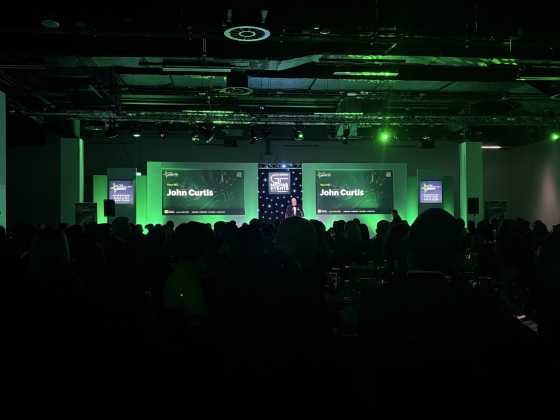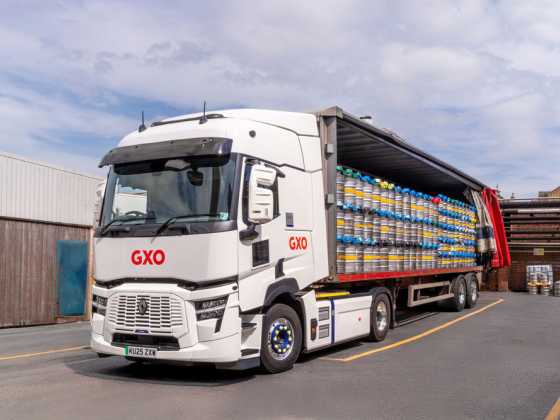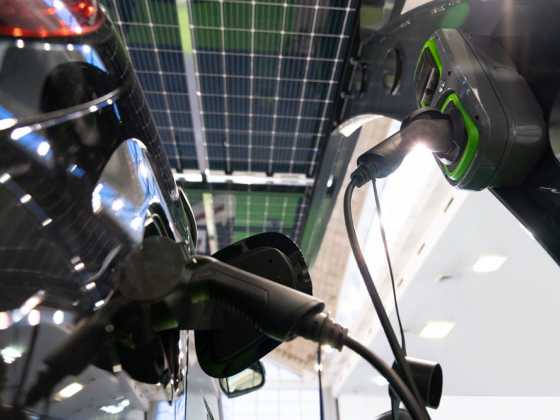Overcoming freight inefficiencies for SMEs

Whether an SME has its own fleet, or relies on deliveries from suppliers, freight decarbonisation should be a top priority. But where should they start? Sadie Hodgson from Better Bankside, a London Business Improvement District that is helping SMEs through its Southwark Climate Collective Initiative, shares some ideas.
There is compelling evidence that the decarbonisation of delivery, services and operations should be prioritised by SMEs. The sheer volume of parcels shipped in the UK, which reached 4.1 billion in 2020-21, underscores the capacity challenge faced by businesses that have a delivery element.
At the same time, with 56 per cent of British consumers expecting same-day delivery, the shipping pressures facing modern SMEs is immense. Congestion exacerbates this issue, costing the road freight industry an estimated £3-6 billion annually, driven by a significant 65 perc ent increase in light goods vehicles.
Moreover, carbon emissions and air pollution remain critical concerns – Southwark, where our SCC programme is being rolled out, consistently breaches legal air pollution limits, endangering health, especially during peak hours. The UK government’s commitment to achieving net zero emissions by 2050 includes a ban on new petrol and diesel heavy goods vehicles by 2040, further emphasising the urgency for SMEs to transition to cleaner delivery and servicing.
Operational costs due to missed deliveries, delays, and penalty charge notices compound the financial burden on companies, making decarbonisation not only an environmental imperative but also a strategic economic and brand decision.
Decarbonising freight can save SMEs money. For those large enough to own fleets, decarbonisation can reduce fuel and maintenance costs, ensuring compliance with emissions regulations, and avoiding related fines. Electric and hybrid vehicles benefit from financial incentives, grants, and tax breaks.
Decarbonised fleets often also have higher resale values and face fewer operational disruptions in low-emission zones. For both SMEs that own, and those that use freight, a commitment to more environmentally responsible practices enhances brand image and customer loyalty.
By adopting and using a decarbonised fleet, SMEs can lower operating costs and drive customer loyalty as a result of their sustainability credentials.
Where to start
For SMEs, whose time, skills and resources are already stretched, decarbonising freight and the fleet services they use can seem an onerous undertaking, and one in which it is hard to know where to start.
For the Southwark SMEs that have chosen the freight workstream within our SCC programme, we demonstrate that big differences can be made by just taking a more strategic and thoughtful approach to deliveries.
By an evaluation of how goods are transported to and from their businesses, the programme can bring about reductions in carbon emissions and cost savings, with the welcome associated improvement in air quality for the wider community. Here we break out some of the programme’s most impactful takeaways and share the experience of the Royal College of Obstetricians and Gynaecologists in using data to uncover their biggest freight inefficiencies.
Five decarbonisation methods
Firstly, reduce the number of suppliers you use. Consolidate trips made by different companies into just one visit by getting similar goods from one supplier.
Secondly, reduce the frequency of visits. Have the suppliers / services you use visit less often by bringing greater quantities in one trip, better coordinating deliveries, or preparing goods/ waste to be collected together (e.g. waste compacting).
Thirdly, re-time visits. Arrange for deliveries to be made at times when roads are less busy, allowing for less fuel and emissions to be expended in traffic.
The fourth tip is to re-mode the vehicles used. Work with suppliers who use more efficient vehicles, such as those that have moved from diesel to electric vehicles. Use the right size vehicle for your deliveries – small packages can be delivered by foot or cycle. The final tip is to re-route freight visits. This can be done by reducing vehicle miles by choosing suppliers that are more appropriately located – working as locally as possible. As well as providing a dedicated space to make deliveries.
Use data
Collecting data is an essential way to accurately assess which changes will have the biggest impact to your freight infrastructure. Work with suppliers and delivery partners to record what specifically is raising your freight footprint. Are too many deliveries taking place during peak hours? What types of vehicles or fuel are being used most regularly? Are there more trips happening than is strictly necessary? Not only will this assessment mean a clear decarbonisation roadmap, it will also reveal inefficiencies which will save money and improve your service. Vehicles travelling at peak times, stuck in traffic, take longer and using a smaller fleet will be more cost effective.
Centralise your procurement
When it comes to product orders, a key efficiency sometimes overlooked by SMEs is lack of communication between different team members and departments. We have found that multiple teams in one business can be ordering similar items (such as stationery) daily, which could be consolidated with one supplier or through less regular orders.
This issue can be changed simply by creating a more centralised procurement system which allows all departments to have sight of what is being ordered and when. It may sound complex, but providers often offer tools to help centralise orders and staff can help co-create your new approach.
For micro businesses, the solution could be as simple as ensuring product needs are co-ordinated by one member of staff, or that teams pool their individual needs into one order which happens at the end or beginning of the week.
The Southwark Climate Collective (SCC)
The Southwark Climate Collective (SCC) project, provides free decarbonisation support for 160 SMEs within the borough of Southwark. Bringing together a powerful, cross-borough partnership of Team London Bridge, Southwark Council, The Blue Bermondsey and Elephant and Castle Business Forum, led by Better Bankside, the SCC pools resources, advice and business relationships, to help SMEs decarbonise their operations in four areas: energy, waste, freight and supply chains, with the aim of a 1,204 tCO2e reduction in carbon dioxide emissions by March 2025.
The project has been funded by a £653,000 grant from the Mayor of London as part of its UK Shared Prosperity fund (UKSPF) and is in response to specific challenges faced by SMEs when it comes to the decarbonisation of their businesses.
SMEs can find out more about the programme, and access additional resources to support the decarbonisation of their own businesses here.






